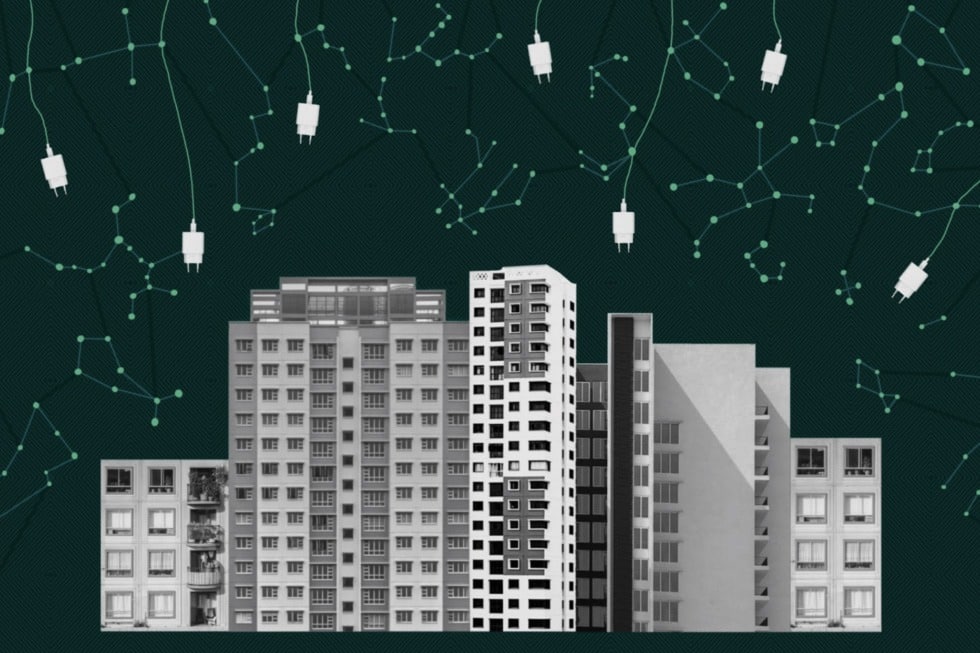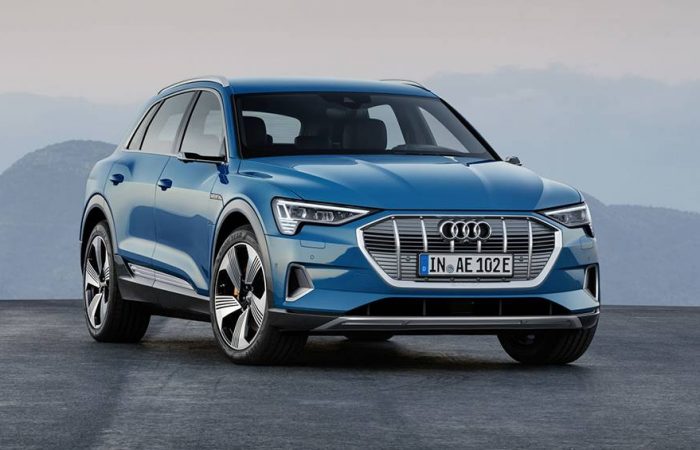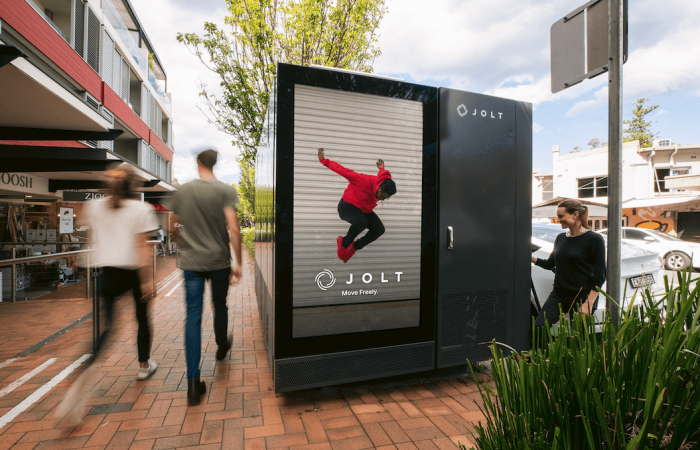By Alannah Milton
With one third of Australians renting and the number of people living in apartments growing over 78% in the last 25 years, ensuring these people can access electric mobility requires alternative charging options. Even affordable EVs aren’t worth buying if you can’t charge them.
Why charging at home is limited for renters and apartment owners
EV owners have two options for charging at home. The first option is plugging their EV into a standard wall socket, which adds approximately 15km of range for every hour the vehicle is plugged in. The second option involves using a wall-mounted charger installed by an electrician, which adds up to 40km of range for every hour of charge. Access to either arrangement requires off-street parking – a scarcity in the city. (See guide to EV Charging Speeds)
Even for renters and apartment owners with access to off-street parking, the ability to charge there will depend on the existing electrical infrastructure, approval from landlords or Owners Corporations, and one party’s willingness to fork out the capital. Unless they can overcome these teething issues, EV owners will need to look elsewhere for their charge.
Public chargers are a substitute for charging at home
Fast public chargers will be the new servo for renters and apartment owners. As little as 15 minutes of charge at a fast charger can deliver 7Kwh, equivalent to approximately 45km, which covers the average Australian’s daily commute. (See our guide to costs of public charging here)
Currently, though, only a few fast public chargers are servicing our major cities. A PlugShare search of Sydney will quickly reveal how few options there are (hint: look for the orange pins), despite this city featuring the top suburbs for EV ownership in NSW.
While electric superhighways and promises of chargers in regional tourist hotspots attract our attention, their less sexy-sounding counterparts – fast public chargers in high-density residential areas – tend to be overlooked. Recognising this issue, the Grattan Institute recently recommended that governments “plan now to ensure convenient, local vehicle charging is available by 2030 for all residents of homes without off-street parking”.
Increased demand for public chargers as the market matures
Public chargers will only become more essential as EV adoption becomes more widespread. Currently, the market is in its infancy. Of the EV owners in NSW, 88% own their home and 75% have additional cars in their household, meaning charging barriers to EV ownership are heavily reduced.
But this demographic does not represent the future of EV ownership. Cheaper models are entering the Australian market. The MG ZS-E is $44,990 drive away and the BYD, releasing in Australia in 2022, is anticipated to beat that price. The Victorian Treasurer, Tim Pallas, expects EVs to reach price parity with gas guzzlers by 2025. In the next few years, fleets will trade in their EVs on the secondhand market. Together, these factors will create greater diversity in who owns an EV. Renters, apartment owners, ride-share drivers and car-share users will electrify, all of whom have high demand for public charging.
Future-proofing through building codes
One way that governments overseas are trying to support renters and apartment owners’ access to chargers is through building codes that mandate future developments are ‘EV ready’. This requires developers to ensure new buildings have the electrical infrastructure and parking space needed to support the future EV owners who’ll live there.
State governments in Australia have shown some initial willingness to adopt these codes. In 2018, the ACT government committed to amending its Parking and Vehicle Access General Code to require all new multi-unit and mixed-use developments to have EV charging infrastructure installed. In March 2021, the NSW government also indicated its plans to update relevant regulations to ensure new buildings and precincts are EV ready.
Until ‘EV ready’ buildings become the norm though, public chargers remain essential in the electric ecosystem. As the Head of Energy and Infrastructure at the Electric Vehicle Council, Ross De Rango, recently said, “the model of routinely attending a petrol station will give way to a future where the majority of vehicle refuelling is done at the home or the workplace, with high-power fast charging at public locations filling in the gaps.”
Right now, it’s renters and apartment owners who live in the gaps. Ensuring they can access EV charging depends on installing fast public chargers where they live because that’s where they’ll want to charge.



